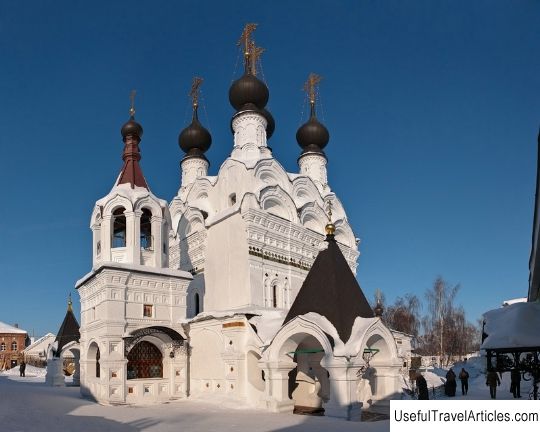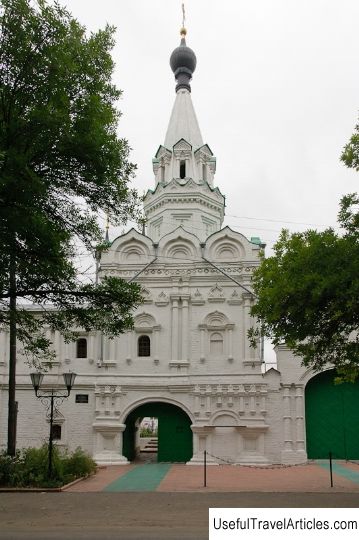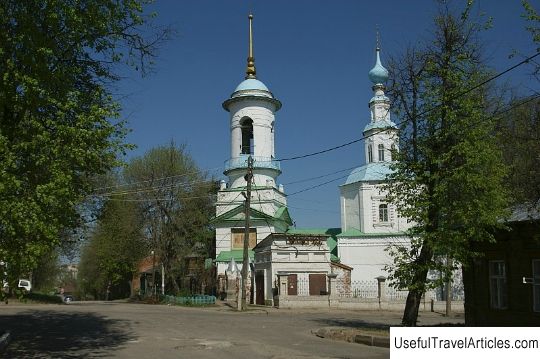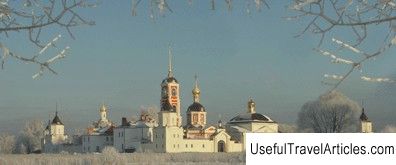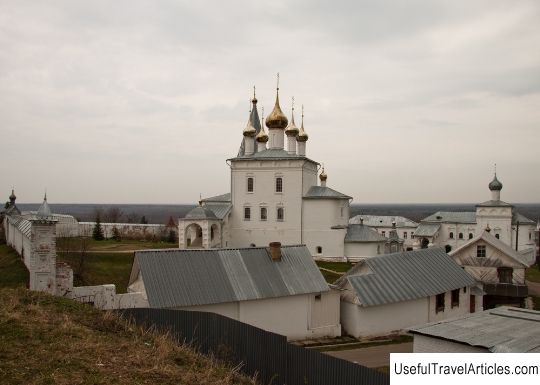Bell tower of the Trinity Monastery description and photos - Russia - Golden Ring: Murom
Rating: 7,9/10 (1039 votes) 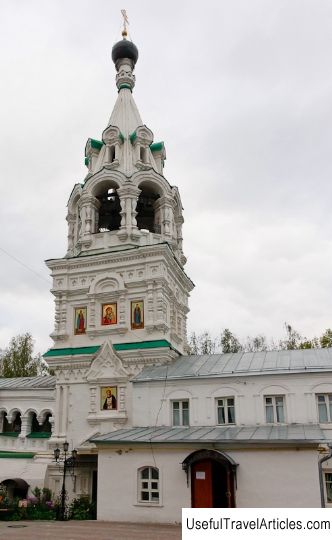
Bell tower of the Trinity Monastery description and photos - Russia - Golden Ring: Murom. Detailed information about the attraction. Description, photos and a map showing the nearest significant objects. Photo and descriptionIn 1652, a bell tower was built on the west side of the Kazan Gate Church, which finally completed the architectural composition of the Trinity Monastery. The Kazan Gate Church is located symmetrically to the Trinity Church - the bell tower is also located. The construction of the bell tower at the Trinity Monastery was carried out in the second half of the 17th century. It is important to note that the newly built bell tower was characterized by an extraordinary richness and a wide variety of shapes and details. In this period of time, the main type of the hipped bell tower was definitely formed, when the octagon with ringing was located on the quadrangle - there was also an octahedral tent. This kind of bell towers that have come down to modern times are very few, at the same time, the largest number of them is distinguished by a special rich design, a picturesque silhouette, and also excellent acoustic properties. The most picturesque among the bell towers are considered: the bell tower of the Church of St. Nicholas in Pyzhy, the Trinity Church in Nikitniki and in Moscow. The bell tower at the Trinity Monastery in Murom is especially close in its architectural appearance to the previously mentioned ones, but still somewhat surpasses them in the question of the variety and richness of details. For the purpose of improving the proportions, as well as building the bell tower as a dominant vertical building at the monastery, the chief architect pulled it up a little, exposing it to two quadruplets, located one under the other and separated by belts from cornices. The lower quadrangle is modest and is, as it were, a continuation of the wall, simultaneously erected with the gateway temple. At the same time, two pilasters located in the corners and equipped with deep vertical niches clearly distinguish all the boundaries of the bell tower. As for the second tier, then the master was able to show all his skills on a relatively small surface, using the most versatile details. For example, the cornice between the first and second tiers is cut by a window with a deep platband, which ends with a pediment. In the corners there are twin columns supported by consoles made of white stone, and a wide cornice belt with chiseled elements and intricate profile. Along the straight tier, there are window openings with an unusual frame made in the form of balusters and cornices with a slightly torn pediment, which cuts into the cornice in the interval between the tiers. The third tier stands out with an indescribable richness of forms, in the space of which walls are not felt at all, while all its sides are stone carvings. In the corners, in place of the half-columns, there are carved balusters equipped with median rosettes on the cornice. The frieze contains recessed niches equipped with helmet-shaped ceramic inserts similar to those of the Trinity Church. In the very center of the niche there is a window with an ornamental pattern, which is a hanging arches framed by platbands in the form of rosettes and balusters. The window opening is completed with a crushed semicircular stone pediment, and in its central part there is a classic rosette. In the space between the corner balusters there are elongated and deep niches, in which old paintings are still preserved. The completion of the bell tower in its details is especially close to the completion of the bell tower of the Trinity Church in the village of Nikitniki. The overlapping of the arched openings is made in the form of semicircular arches, which are somewhat expanded in the area of adjoining the tent. The outer sides of the pillars are decorated with balusters, and at the corners of the pillars there are semi-columns that smoothly turn into a small octagon base. It is worth noting that the corners of the octahedral tent are clearly emphasized by triple tiled edges, which bear a great decorative value. The aforementioned edges have always been of great practical importance in the process of sealing corners when mating a face. The end of the tent is made as a bulbous cupola, which rests on an octagonal neck. The smooth transition from the neck to the tent is made in the form of small kokoshniks. There are a number of rumors in the hip part, which is an uncharacteristic feature for the overwhelming number of bell towers.       We also recommend reading Cathedral of St. Nicholas the Wonderworker description and photos - Russia - Leningrad region: Novaya Ladoga Topic: Bell tower of the Trinity Monastery description and photos - Russia - Golden Ring: Murom. |
